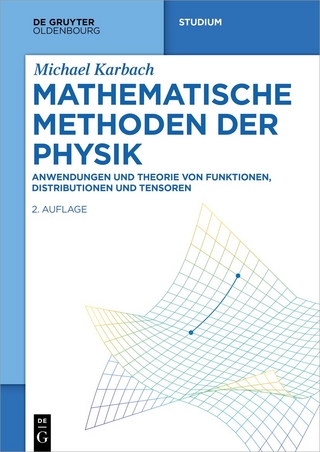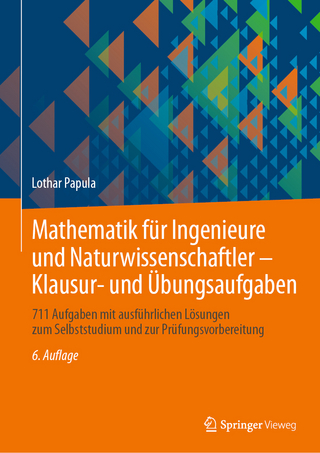
Systems Biology
Cambridge University Press (Verlag)
978-1-107-03885-1 (ISBN)
Recent technological advances have enabled comprehensive determination of the molecular composition of living cells. The chemical interactions between many of these molecules are known, giving rise to genome-scale reconstructed biochemical reaction networks underlying cellular functions. Mathematical descriptions of the totality of these chemical interactions lead to genome-scale models that allow the computation of physiological functions. Reflecting these recent developments, this textbook explains how such quantitative and computable genotype-phenotype relationships are built using a genome-wide basis of information about the gene portfolio of a target organism. It describes how biological knowledge is assembled to reconstruct biochemical reaction networks, the formulation of computational models of biological functions, and how these models can be used to address key biological questions and enable predictive biology. Developed through extensive classroom use, the book is designed to provide students with a solid conceptual framework and an invaluable set of modeling tools and computational approaches.
Bernhard O. Palsson is the Galletti Professor of Bioengineering and Professor of Pediatrics at the University of California, San Diego. For almost 30 years, his research has focused on the development of large-scale models of biological functions and their use to solve basic and applied problems in the life sciences. He has authored three previous textbooks.
Preface; 1. Introduction; Part I. Network Reconstruction: 2. Network reconstruction: the concept; 3. Network reconstruction: the process; 4. Metabolism in Escherichia coli; 5. Prokaryotes; 6. Eukaryotes; 7. Biochemical reaction networks; 8. Metastructures of genomes; Part II. Mathematical Properties of Reconstructed Networks: 9. The stoichiometric matrix; 10. Simple topological network properties; 11. Fundamental network properties; 12. Pathways; 13. Use of pathway vectors; 14. Randomized sampling; Part III. Determining the Phenotypic Potential of Reconstructed Networks: 15. Dual causality; 16. Functional states; 17. Constraints; 18. Optimization; 19. Determining capabilities; 20. Equivalent states; 21. Distal causation; Part IV. Basic and Applied Uses: 22. Environmental parameters; 23. Genetic parameters; 24. Analysis of omic data; 25. Model driven discovery; 26. Adaptive laboratory evolution; 27. Model driven design; Part V. Conceptual Foundations: 28. Teaching systems biology; 29. Epilogue; References; Index.
| Zusatzinfo | 45 Tables, black and white; 8 Halftones, unspecified; 218 Halftones, color; 19 Line drawings, unspecified; 26 Line drawings, color |
|---|---|
| Verlagsort | Cambridge |
| Sprache | englisch |
| Maße | 182 x 255 mm |
| Gewicht | 1270 g |
| Themenwelt | Mathematik / Informatik ► Mathematik ► Angewandte Mathematik |
| Medizin / Pharmazie ► Physiotherapie / Ergotherapie ► Orthopädie | |
| Naturwissenschaften ► Biologie ► Genetik / Molekularbiologie | |
| Naturwissenschaften ► Chemie ► Technische Chemie | |
| Technik ► Medizintechnik | |
| Technik ► Umwelttechnik / Biotechnologie | |
| ISBN-10 | 1-107-03885-5 / 1107038855 |
| ISBN-13 | 978-1-107-03885-1 / 9781107038851 |
| Zustand | Neuware |
| Haben Sie eine Frage zum Produkt? |
aus dem Bereich


